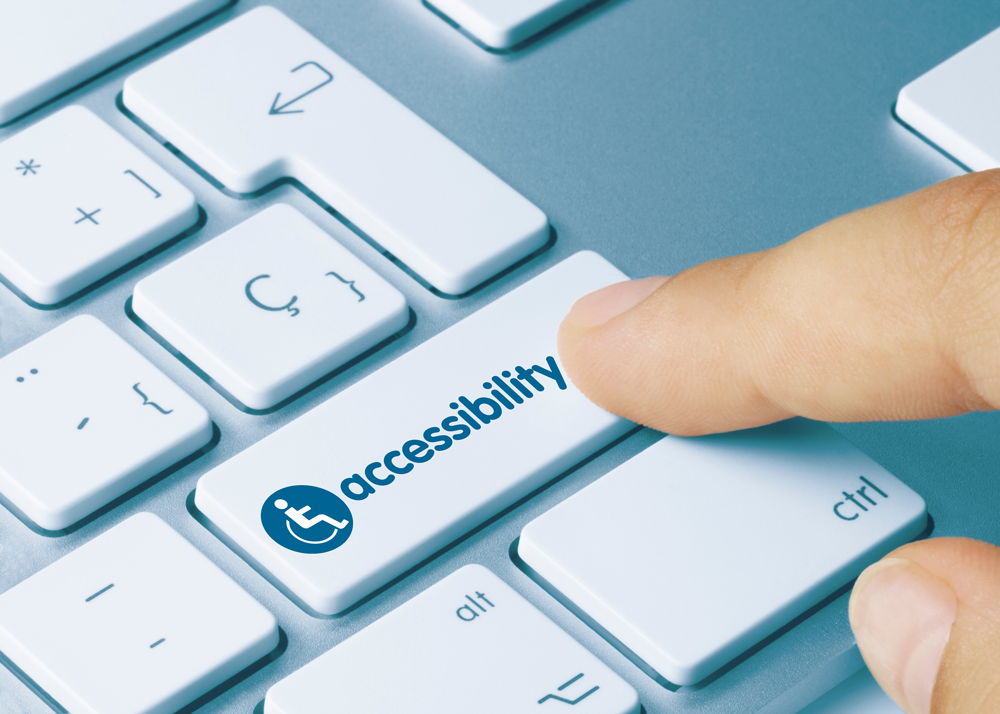We all want to make sure our digital presence is as easy to use as possible. That means considering the issue of accessibility and doing as much as possible to enable users in their journey through your website or portals.
Why accessibility, and does it matter?
According to Scope UK, 1 in 5 people in the UK have some form of long-term disability or impairment, and around 19% of working-age adults are disabled in some way. In many cases, this means that there is an additional dimension to using online facilities such as portals, websites, and other access points. Impaired vision, for example, can render a non-accessible site difficult or impossible to navigate.
There are also over 750,000 people in the UK who do not speak English well or at all. This is, of course, the last point on the scale, and the number of people who have English as a second language (and therefore probably have regular translation issues) is in the millions.
Add into these numbers the user who may have a daily challenge with content because of dyslexia or dyscalculia, and you begin to see the scale of the need for accessibility.
What is accessibility?
Accessibility is a deceptively difficult concept to pin down. Public sector websites, for example, are required to adhere to specific guidelines. These guidelines, the Public Sector Bodies (Websites and Mobile Applications) (No. 2) Accessibility Regulations 2018, are probably a good benchmark for everyone to consider when thinking about accessibility. They state that a website or mobile app should be ‘perceivable, operable, understandable and robust’.
Clearly, though, there are going to be boundaries where it becomes less than reasonable to expect a site to meet the needs of all potential users. In fact, that word ‘reasonable’ is very important. The Web Content Accessibility Guidelines (WCAG)consider accessibility in terms of:
vision – like severely sight impaired (blind), sight impaired (partially sighted), or colour-blind people
hearing – like people who are deaf or hard of hearing
mobility – like those who find it difficult to use a mouse or keyboard
thinking and understanding – like people with dyslexia, autism or learning difficulties
So, when you are thinking about what accessibility means, it can probably be roughly paraphrased as meaning the asset is designed so that reasonable steps have been taken to give access to these groups.
Practically, what should a portal or site do?
This is not necessarily about changing the content; more thinking about how it can be accessed. It is about thinking what reasonable steps can be taken to give better or easier access to those who need it.
Sometimes this can be a very specific, such as a portal to your intranet or other internal systems. Let’s take the issue of non-native English speakers as an example. There are over 650,000 Polish speakers in the UK, but that does not mean you necessarily need to have a polish translation. However, if you are a business that employs significant numbers of polish speaking workers, then there is a reasonable case for considering doing so.
Some accessibility considerations are more general. Again, a commonly used and excellent example of this is people who may have difficulties using a mouse. If you have forms or other requirements for users to input information that cannot be done just from a keyboard, then there is probably a case for a bit of a re-think about your accessibility.
While it is not always possible or practical, if you think your users are likely to have difficulties with complex language use, then there is a very strong argument for using the clearest English possible and perhaps even audio versions of your content.
The important focus is that reasonable efforts have been made generally and, where appropriate, for specific groups of users to ensure reasonable access is there for those who may need it. Specifics of how that is implemented are clearly going to vary, but the principles of access, being perceivable, operable, understandable, and robust, should give a good guide to what you can do to increase accessibility for all.




